Blog
30 July 2025
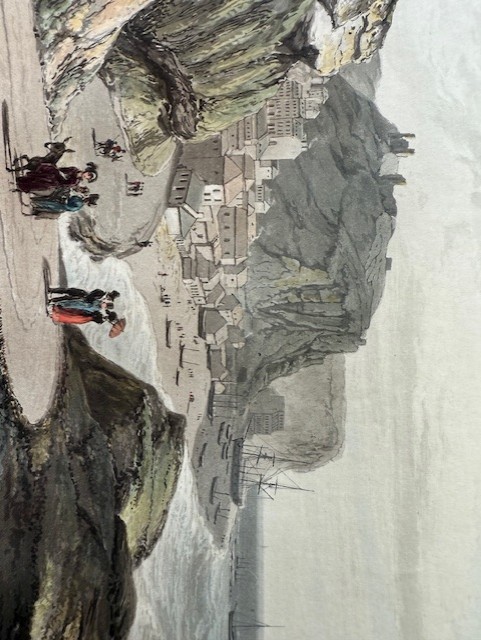
Hastings: 'particularly agreeable, presenting all the means of innocent recreation which are suited to the demands of an elegant society, unalloyed by those incentives to dissipation which public places too commonly present' (William Daniell, 'A Voyage round Great Britain')
The end of July – and the seaside may beckon, or be in the thoughts of many. The immense development in so many parts of the coast of England over the last two centuries – yet also how much that is important has survived – is illustrated in one of the finest of Emmanuel’s collection of colour-plate books, William Daniell’s pioneering A Voyage round Great Britain (8 vols., 1814-25). Pioneering in the sense that Daniell shrewdly spotted a gap in the market for illustrated books for armchair travellers. The contemporary British craze for the Picturesque had prompted plentiful publications illustrating the wilds of inland Britain, but as a subject the coastline had been neglected. For six summers Daniell toured the coast, making sketches of ‘views’, carefully annotated regarding colour and texture, which he then worked up and engraved during the winters. Original plans to sketch the coast from at sea during a circumnavigation of Britain proved impractical. Well before rail travel, it must have been dauntingly arduous to reach every part of the coastline, as Daniell did.
The development of the seaside resort can be traced in Daniell’s prints of such nascent resorts as Hastings and Southend, Brighton and Scarborough.
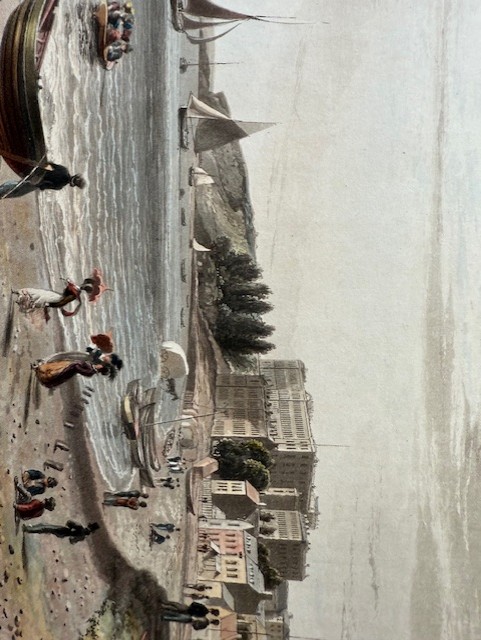
Southend
Daniell notes that Southend boasts ‘means of amusement', but comments that ‘at low water there is the disadvantage of an extensive range of slimy sand, and the wind that blows over it is not so pure as on the more northerly parts of the coast’. Indeed, and there is a ‘low, dull, uninteresting coast which leads to it from the open sea’.
By contrast, Daniell’s commentary on his view of Sidmouth, in its scenic coastal setting, is much more positive about both its health benefits and its entertainments.
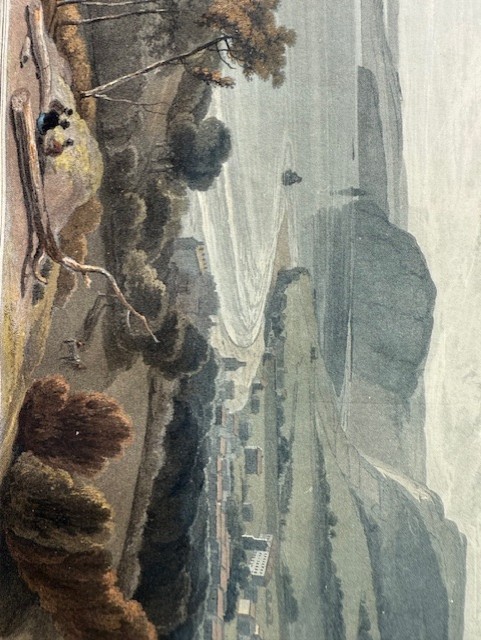
Sidmouth
‘The air is reputed to be as mild and salubrious as that of Italy, and therefore favourable for invalids who are subject to disorders of the lungs’. There is a ballroom, a ‘billiard room on the beach,’ two circulating libraries ‘furnished with fresh novels for the season,’ and surely best of all, ‘a number of brilliant shops’.
Daniell began his on-land, clockwise ‘circumnavigation’ of Britain at Land’s End, from where he set off along the northern coasts of Cornwall and Devon. The Cornish port of Portreath ‘is scarcely to be dignified with the name of a town, for it has no pretensions to a street’ (but is just a group of scattered houses).
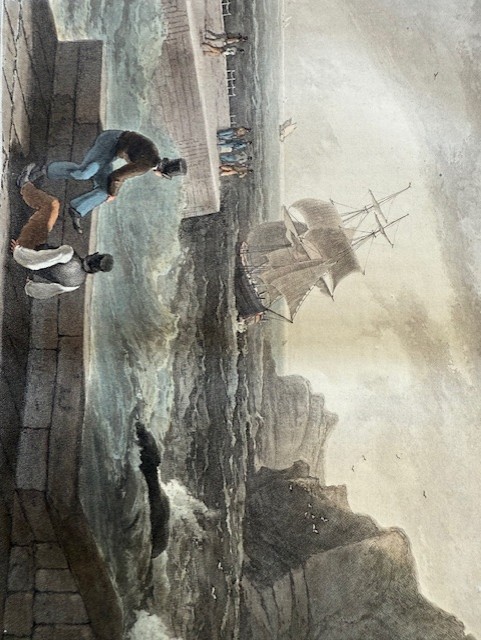
Portreath
But Daniell’s plate catches how it is a bustling place, its harbour crowded with vessels bringing coal from Swansea and Neath and returning with Cornish copper and tin ore.
‘The quay is thronged with men and mules in a state of equal and incessant action’. But the harbour, constructed at great expense over the preceding sixty years, has a perilous entrance between the pier and jagged rocks. Further along the coast, the village of Clovelly is picturesquely steep, with the houses ‘rising step by step, with the roof of one house below the base of another, and so rising up to the top of the hill, suspended like pictures against a wall’.
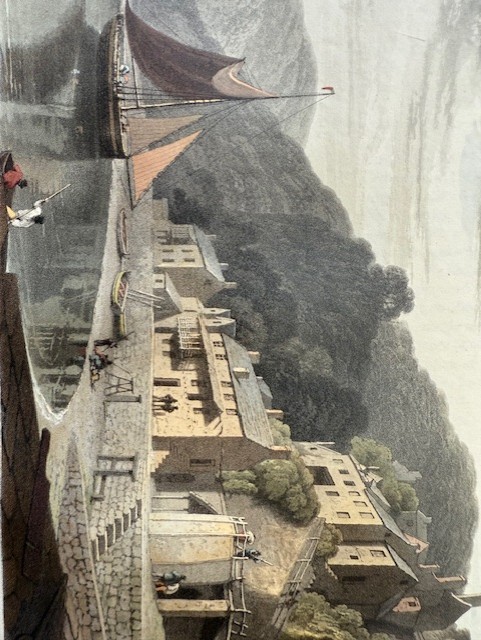
Clovelly
Clovelly’s business is fishing, and: ‘It is evident from the refuse of heads, tails and fins which manure the beach that the shores swarm with fish’.
Ilfracombe gets several plates and Daniell’s highest praise: ‘The general scenery about Ilfracombe would furnish matter for a complete vocabulary of the picturesque: hill, valley, wood, rock and water, all distributed into an arrangement that could not be altered and improved’. Of the ‘mountain’ looming over Lynmouth in his plate: ‘the barrenness, embellished as it is in so majestic a form, is perfectly sublime’.
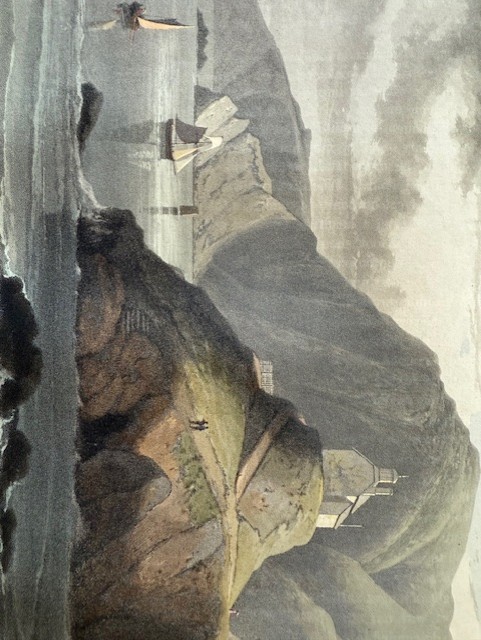
Ilfracombe
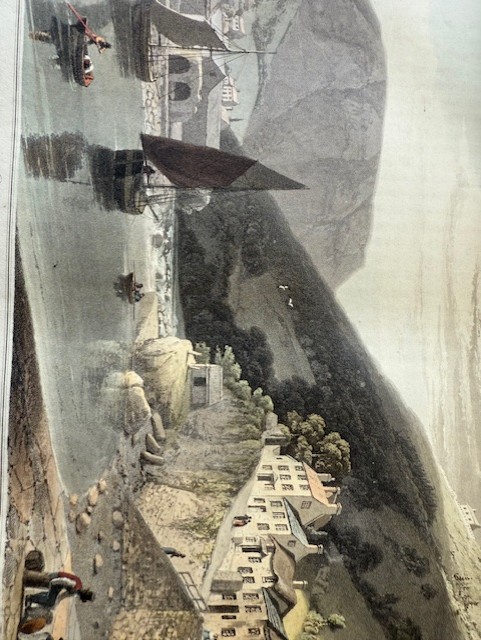
Lynmouth
On the north west coast of England Daniell is confronted with the grimy commerce of such coal ports as Whitehaven and Maryport, the latter all ‘shabbiness and filthiness’.
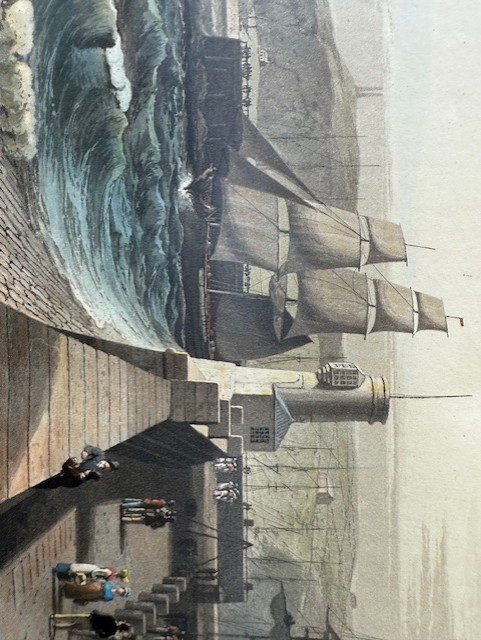
Whitehaven
Standing above a polluted Whitehaven, Daniell sees only ‘a pitchy cloud of smoke hung over the town’ with the occasional roof or chimney piercing the smoke. ‘There was something strangely grand in the effect,’ as if the whole town was about to burst into flames.
On the north east coast of England Daniell is struck by the ‘most imposing’ Bamburgh Castle, set on its basalt rock, ‘high, rugged, and abrupt’.
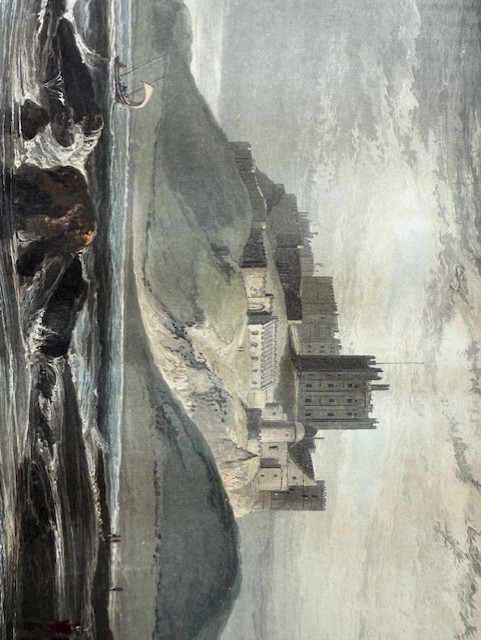
Bamburgh Castle
Rescued by a Bishop of Durham who bought and bequeathed it for charitable purposes in 1720, the castle housed a school for local boys, and a boarding school for 20 poor girls, who were lodged, clothed and educated until they could go into service. A twice-weekly market sold meal and groceries at cost to the poor. There was an infirmary distributing medicine, and a lifeboat and equipment for sea rescue.
At Flamborough Head Daniell strives for ‘the effect of one of those sea mists or fogs, so prevalent on this coast, which, while they involve all below in dense obscurity, afford partial glimpses of the more elevated objects, and cause them to resemble some visionary creation in the clouds’.
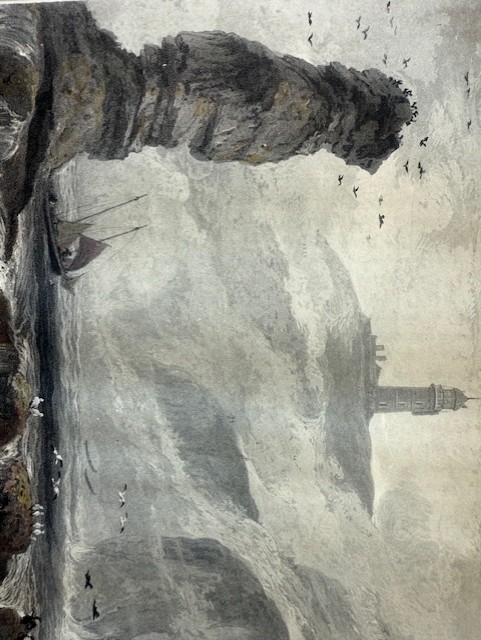
Flamborough Head
There is little to detain Daniell in the coastal scenery of eastern England, though he dutifully depicts ports and coastal towns there and along the English south coast, until he has nearly completed his circumnavigation on the southern coasts of Devon and Cornwall. Here he can celebrate the picturesque in the entrance to Dartmouth and the busy harbour at Mevagissey.
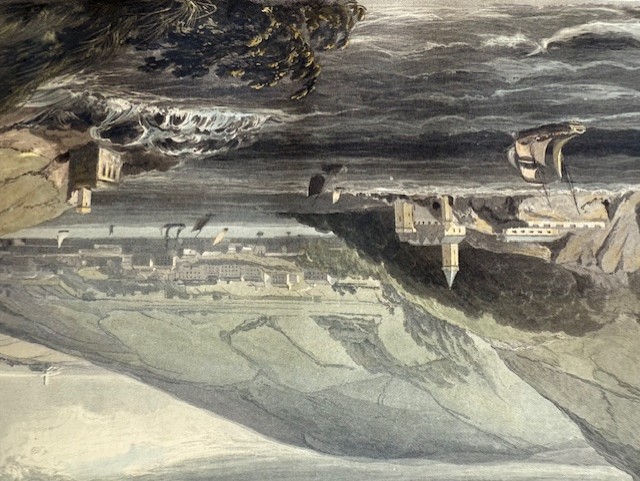
Entrance to Dartmouth
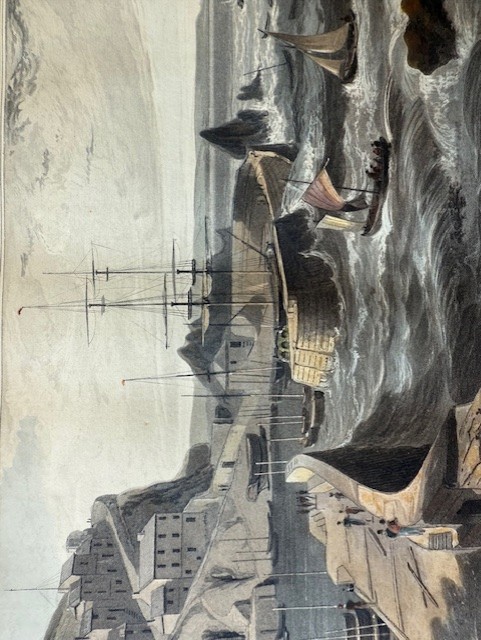
Mevagissey
Dramatic cliff scenery and rocky shores with dashing waves are Daniell’s element, whether at Fowey Castle, or at the Lizard lighthouse with a shipwreck depicted.
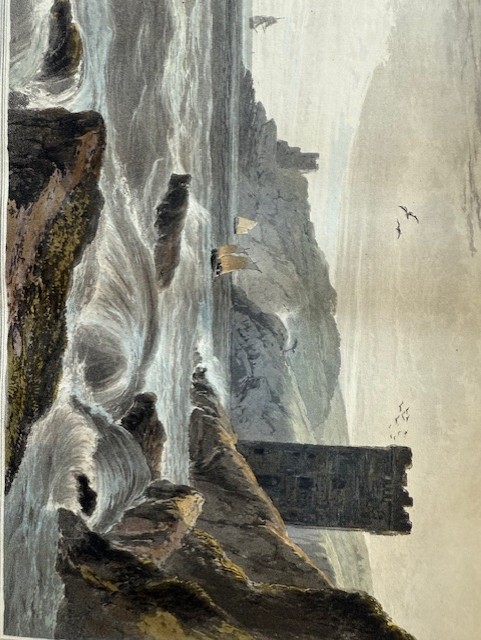
Fowey Castle
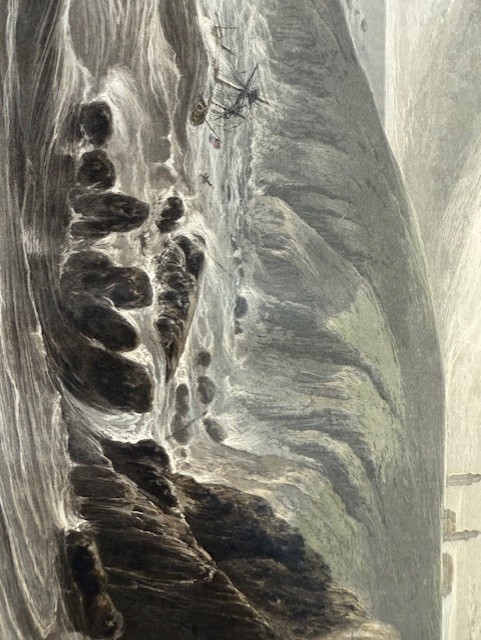
The Lizard
The plate of Mullion Cove presents a coast calmly majestic, before Daniell completes his whole massive enterprise with a plate showing the restless tumult of Land’s End.
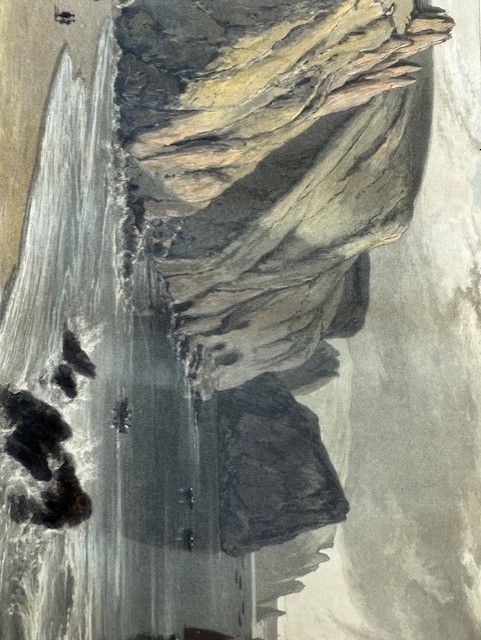
Mullion Cove
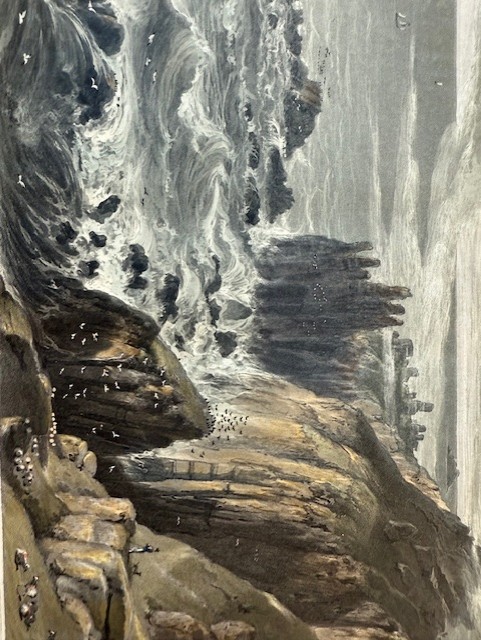
Land's End
The delicacy of Daniell’s drawing and tinting, and the mastery of engraving make his book a classic of acquatint engraving applied to British scenery. And the weather? Daniell’s is a vision of the coastline in a distinctive colour palette: it is predominantly depicted in cool, grey-green hues, with much clear light but little unbroken sunshine.
So much has changed, but this perhaps remains the same.
Barry Windeatt, Keeper of Rare Books